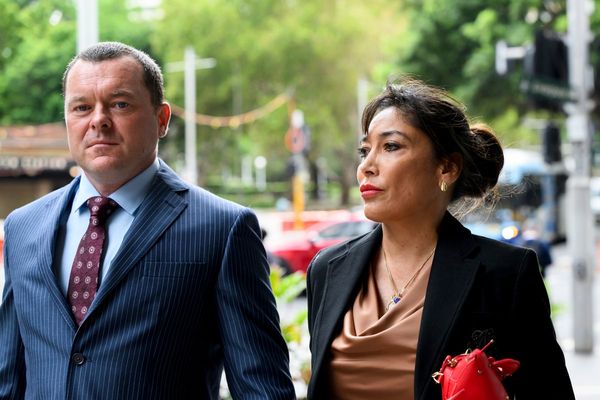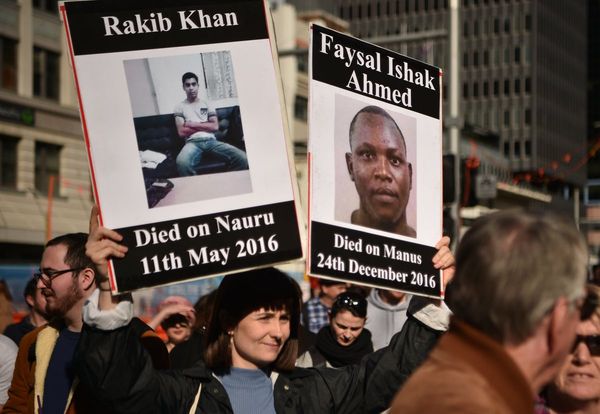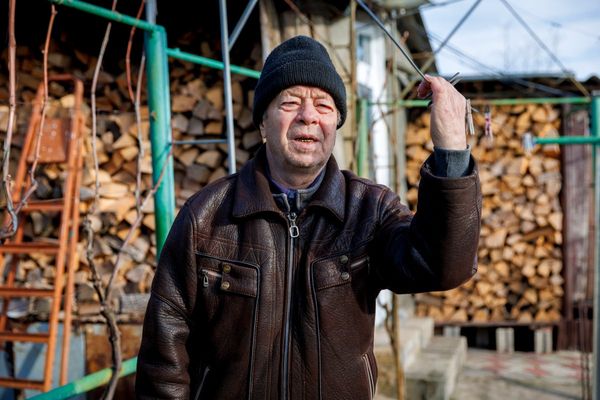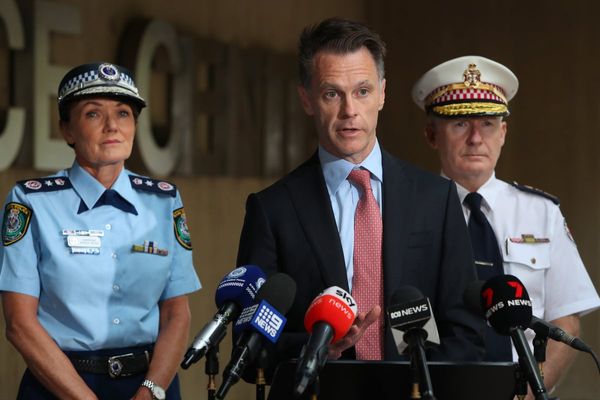
There’s something captivating about an old man in a vest, sitting on a charpai (cot) on a summer afternoon, beneath the wing of a large aircraft. He appears disgruntled, glaring at the viewer with his head slightly tilted. This image was made by Sooni Taraporevala in Bombay in 1982. It now inhabits her series, Home In The City: Bombay 1977-Mumbai 2017, an important collection of black and white photographs that spans four decades, revealing the charm of an ever-evolving city and its people.
The image serves as a memory of a time that no longer exists. Nowhere in the world today will you find a person sitting so casually on the airport tarmac inches away from an aircraft. But what really catches your attention is the nature of the image: It is so intimate that it gives you the sense of unwittingly intruding into the man’s personal space. And that’s the hallmark of Taraporevala’s style—her ability to capture people in their most uninhibited raw moments.

Taraporevala began documenting the city 40 years ago, when she had taken a semester off from her studies at Harvard University, where she was majoring in literature, to return to her home in Mumbai. The images were made using a Nikkormat, a camera she had bought in Boston in 1977 with the help of her roommate Cathy Dement, who had lent her $220 (around Rs14,430 now) to buy her very first professional camera (the first point-and-shoot camera Taraporevala owned was an Instamatic, gifted by her aunt and uncle).

Carrying the Nikkormat around her neck, Taraporevala walked the streets of Mumbai, photographing anything and everything that caught her eye. Little did she know back then that she was building a visual memoir of the city. “One of the earliest successful pictures that I took at that time was of the Gateway of India, framed by the window of the Taj Mahal hotel,” recalls Taraporevala. “It was around the same time that I took the photograph of the camel on Marine Drive. I never had an agenda to document Bombay,” she confesses. “It all happened quite organically.” Both these photographs form part of the series that will be on view at the Chemould Prescott Road gallery this week, an exhibition that has been curated by author Siddharth Dhanvant Shanghvi, with support from Dattaraj and Dipti Salgaocar (founders of Sunaparanta-Goa Center for the Arts, an arts education initiative).

Taraporevala has the eye of an archivist. In 2013, her photographs documenting the Parsi community in India found life in her series, Parsis: The Zoroastrians Of India (chronicled from 1980-2004), which gave an insider’s view into the lives of the otherwise closed community. The exhibition of this series announced Taraporevala (who was known to the general audience as a screenwriter and a film-maker) as a photographer to reckon with.

Sifting through Home In The City, you will see a city age and transform. There is a certain sense of lyricism—an unhurried fluidity—that is present in the images. They are visceral and alive. But it’s the character of the people who populate the images that is really the charm of the series. Often, they depict an individual within a crowd, focusing on their relation to the surroundings. The image of a young boy looking out of a window (Chi Lung Sean Ma, Air Show) is one of Taraporevala’s more memorable ones. “It’s a photograph of an air show in Bombay in 2005. That day, almost all of Marine Drive was packed with people, with not an inch between them. If you look at the photograph, the boy in the window is isolated, while below him there are thousands and thousands of people,” she says.
Taraporevala is a visual diarist. Consider her series on the Parsis, which took almost a quarter of a century to develop, or Home In The City, which took 40 years. One would think that she’s someone who, arguably, holds on to her photographs for decades so as to quietly ruminate over them and build them piece by piece, before sharing them with the world. But Taraporevala modestly puts such assumptions to rest. “It’s not an unwillingness to share, believe me,” she says laughing. “I would have happily done a show (on Bombay) five or 10 years ago.”

The idea of holding an exhibition specifically on Mumbai happened by chance. For years the photographs remained unseen, relegated to the confines of a file cabinet. They were taken out at the behest of Photoink’s founder-director Devika-Daulet Singh. “My friend Siddharth Dhanvant Shanghvi and I had initially thought of doing a show on my iPhone (colour) work. Then he invited Devika on board, and when she was looking at my photographs, she said, ‘Why don’t we do something with your Bombay work? Look at your archives.’ And that’s how it all happened.”

The Mumbai images that were shot on film were specifically culled and scanned for the show. Not all of them, particularly the older ones, were in mint condition though. “I had a leak in my roof once, and some negatives were ruined then because of water damage. Thanks to digital scanning though, the ones that could be saved were saved really well, and I could preserve them.” This particular exhibition features 102 photographs, of which 80 are made on film. The rest belong to the period after 2004 and have been shot using digital cameras (she currently uses a Leica M10 and a Canon 6D), when Taraporevala turned to digital photography for good.
Shanghvi has got the images bound in a book—with an introduction by authors Pico Iyer, Salman Rushdie and himself. It will be launched on the opening day.

Home In The City displays a certain kind of photographic intimacy. In a time when images are made for immediate broadcast and “likes”, this particular series allows you to revisit a time that was much simpler, slower and far more cherished.
Home In The City, Bombay 1977-Mumbai 2017 will show from 14-31 October, 11am-7pm, at Chemould Prescott Road Gallery, Fort, Mumbai. Click here for details.







